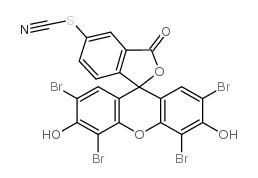The rotational diffusion of chloroplast phosphate translocator and of lipid molecules in bilayer membranes.
R Wagner, E C Apley, A Gross, U I Flügge
文献索引:Eur. J. Biochem. 182(1) , 165-73, (1989)
全文:HTML全文
摘要
The rotational mobility of the phosphate translocator from the chloroplast envelope and of lipid molecules in the membrane of unilamellar azolectin liposomes has been investigated. The rotational dynamics of the liposome membrane were investigated by measuring the rotational diffusion of eosin-5-isothiocyanate(EITC)-labeled L-alpha-dipalmitoylglycerophosphoethanolamine (Pam2 GroPEtn) in the lipid phase of the vesicles, either in the presence or absence of the reconstituted phosphate translocator. The temperature dependence of the anisotropy decay showed that above 25 degrees C the main contribution to the anisotropy decay was caused by uniaxial anisotropic rotation of the labelled lipid molecules around the axis normal to the membrane plane. The rate of rotation of the labelled lipid molecules was strongly dependent on the viscosity of the medium (eta 1). Extrapolation to eta 1 = 0 Pa.s yielded a correlation time of phi = 20 +/- 5 ns, t = 30 degrees C, for lipid rotation with respect to the membrane normal. The rotational diffusion coefficient of the lipid molecules was calculated to be Dr = 2.0 x 10(9) rad2.s-1 and the apparent microviscosity in the vesicle membrane, as derived from the rotational correlation time, was eta 2 approximately 12 mPa.s. The rotational correlation time of the phosphate translocator in the membrane was only slightly dependent on the viscosity of the medium. The temperature dependence of the protein rotation also indicated that the rotation of the protein in the membrane was largely restricted and occurred mainly about the axis normal to the membrane plane. Measurements at a medium viscosity of eta 1 = 1 mPa.s yielded a value of phi r approximately 450 ns corresponding to Dr = 8.8 x 10(7) rad2.s-1 for protein rotation with respect to the membrane normal. From this value and the data of the lipid rotation, the cross-sectional area of the protein part embedded in the membrane was calculated to be approximately 9 nm2. This cross-sectional area is large enough to include at most 14 membrane-spanning helices. Our results also indicated that at lipid/protein molar ratios greater than or equal to 1.5 x 10(4): 1 aggregation occurred in the model membranes below 30 degrees C. However, above 30 degrees C and at a high dilution of the protein in the membrane it appeared that the membrane viscosity monitored by lipid and protein rotational diffusion were identical.
相关化合物
| 结构式 | 名称/CAS号 | 分子式 | 全部文献 |
|---|---|---|---|
 |
曙红5-异硫氰酸酯
CAS:60520-47-0 |
C21H7Br4NO5S |
|
Lys-430, site of irreversible inhibition of band 3 Cl- flux ...
1993-05-01 [Am. J. Physiol. 264(5 Pt 1) , C1155-64, (1993)] |
|
Avidin-EITC: an alternative to avidin-FITC in confocal scann...
1993-08-01 [J. Histochem. Cytochem. 41(8) , 1267-72, (1993)] |
|
Photohemolysis of human erythrocytes labeled in band 3 with ...
1986-10-01 [Photochem. Photobiol. 44(4) , 495-9, (1986)] |
|
Domain structural flexibility in rhodanese examined by quenc...
1987-11-26 [Biochim. Biophys. Acta 916(2) , 236-44, (1987)] |
|
Resonance energy transfer as a direct monitor of GTP-binding...
1991-07-23 [Biochemistry 30(29) , 7112-8, (1991)] |